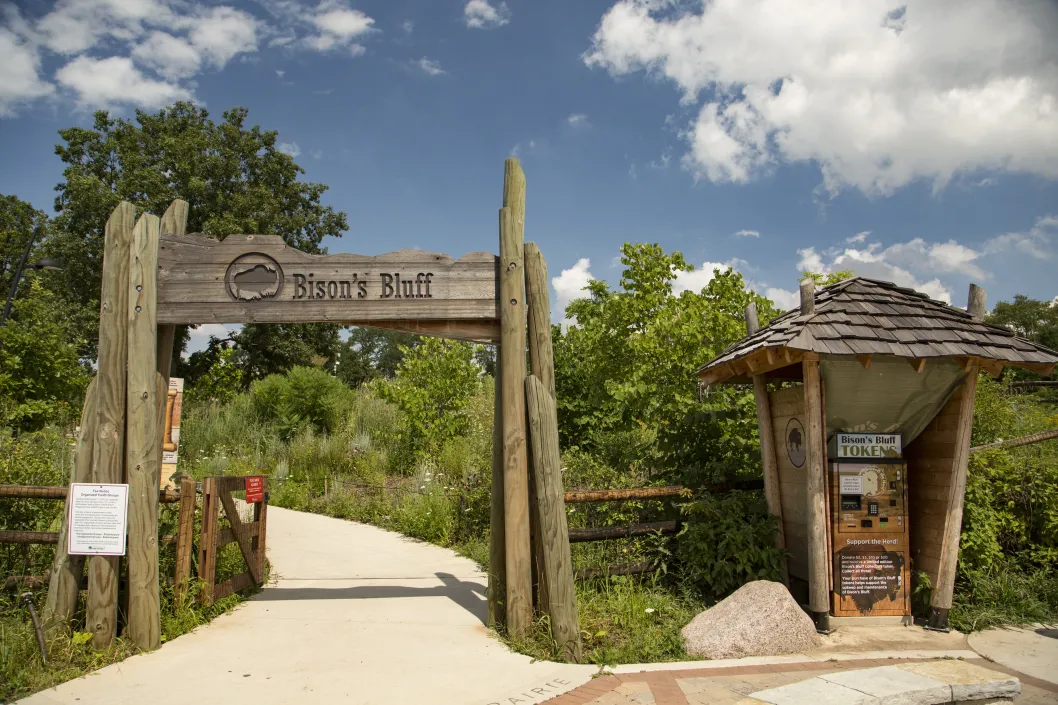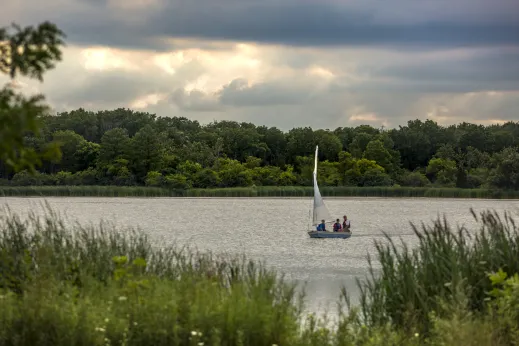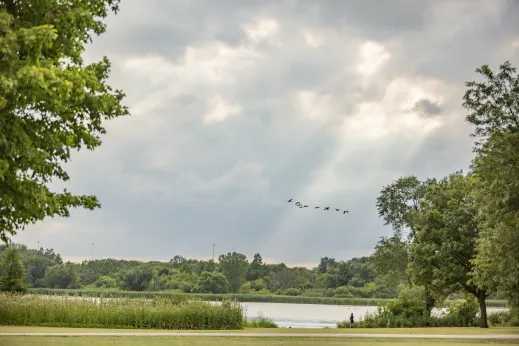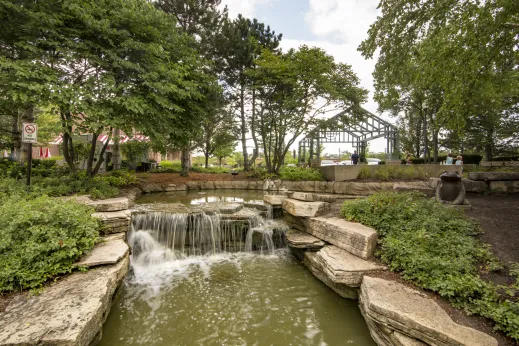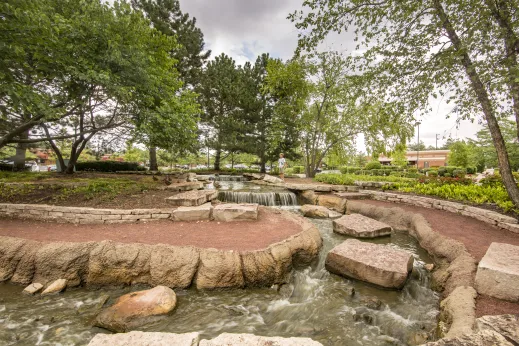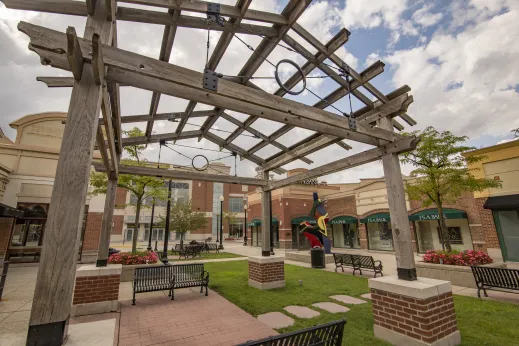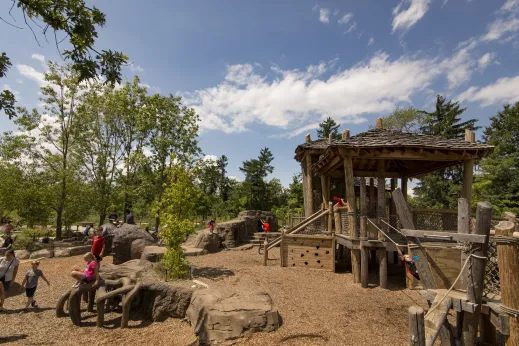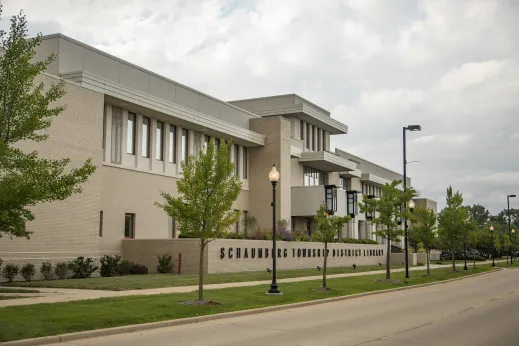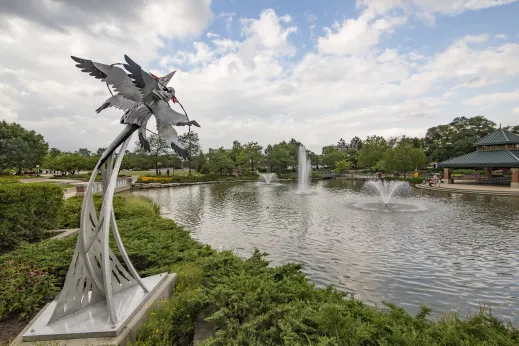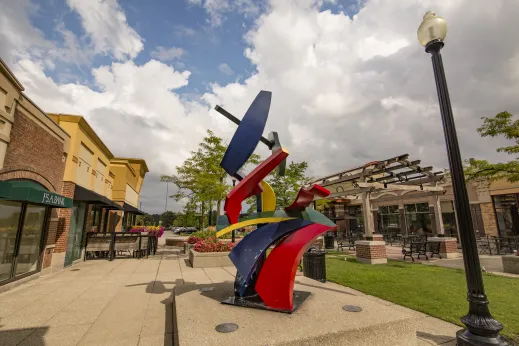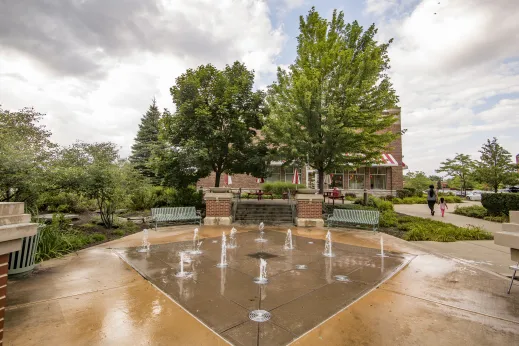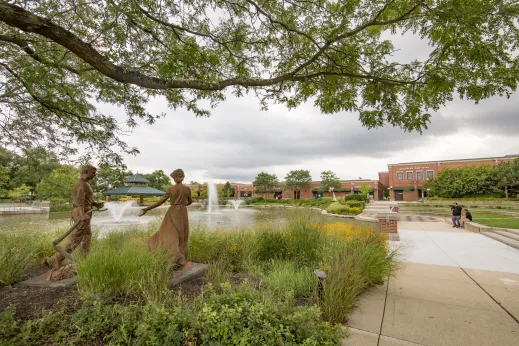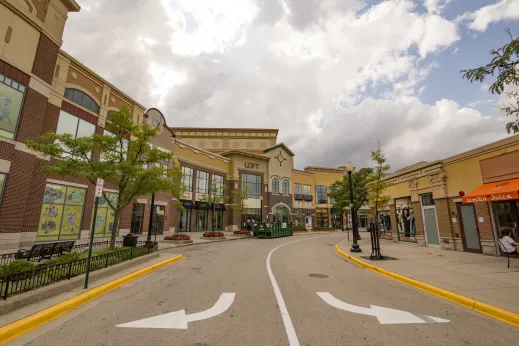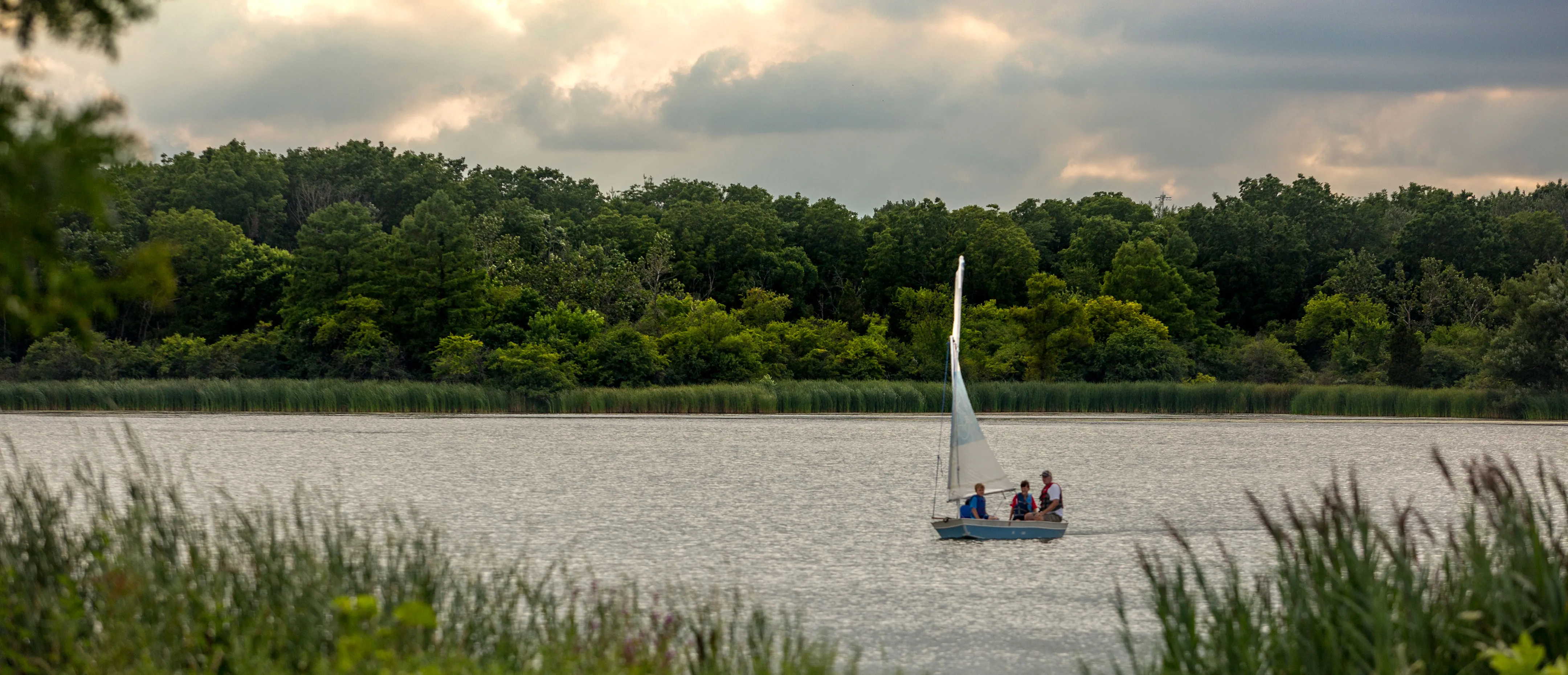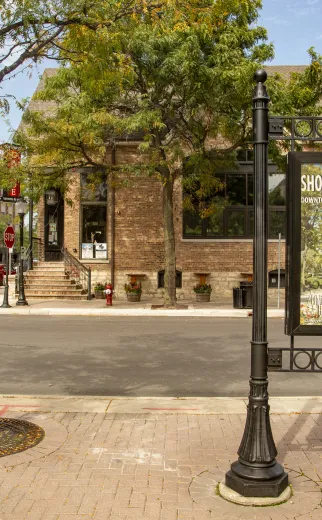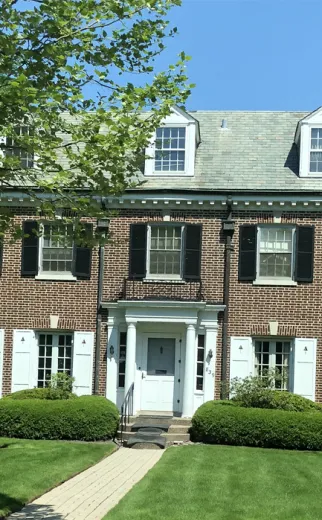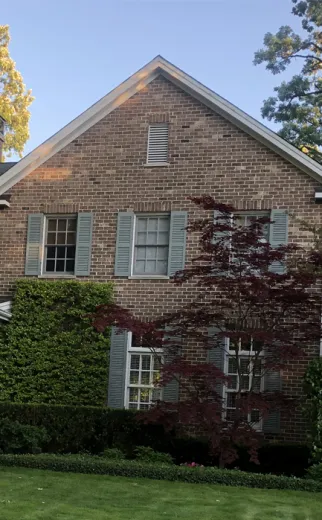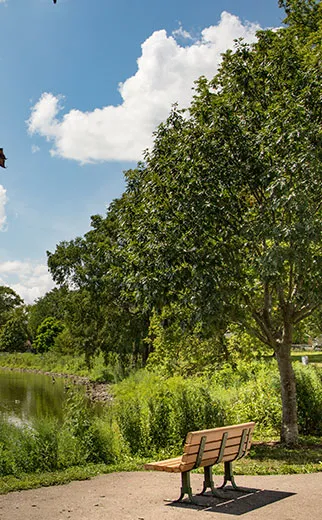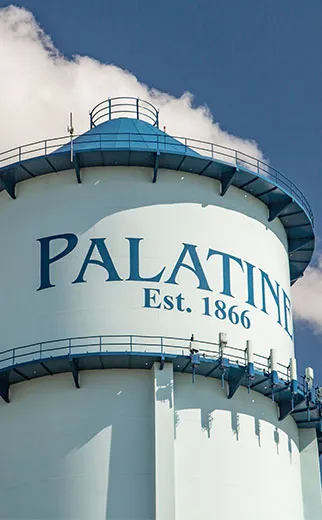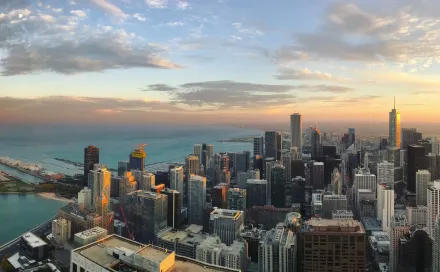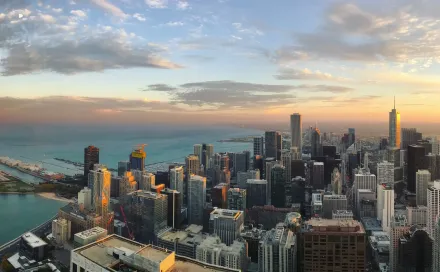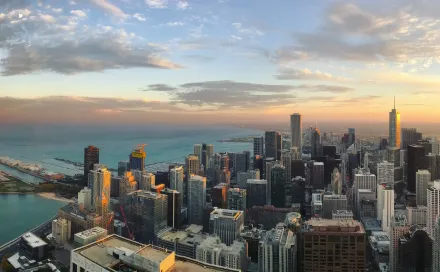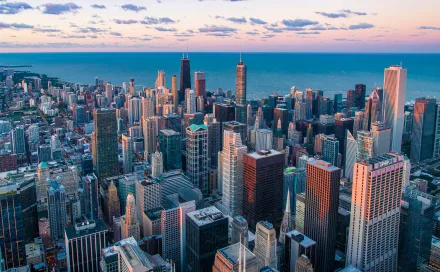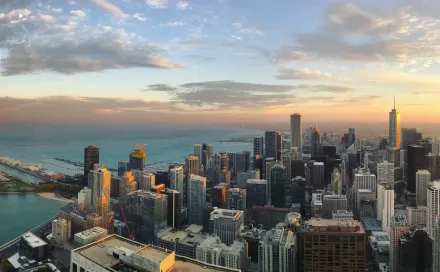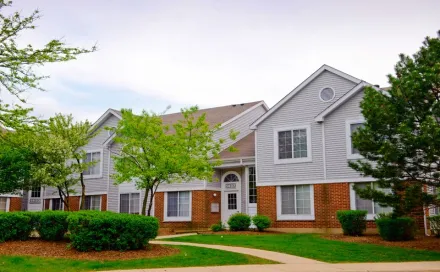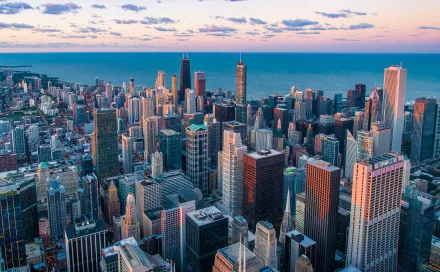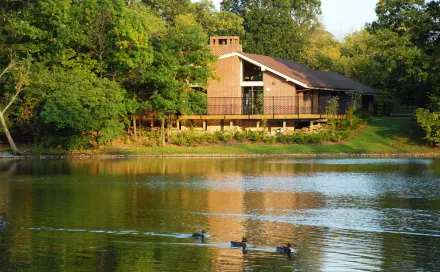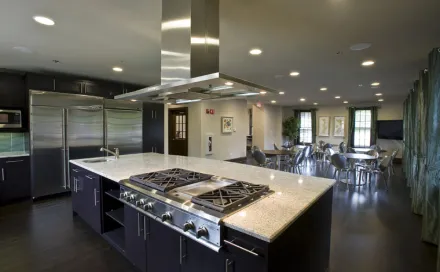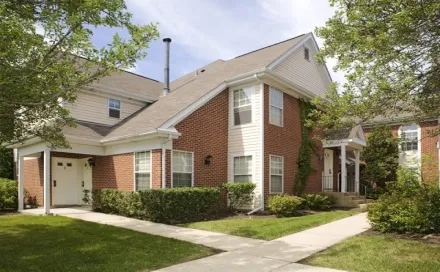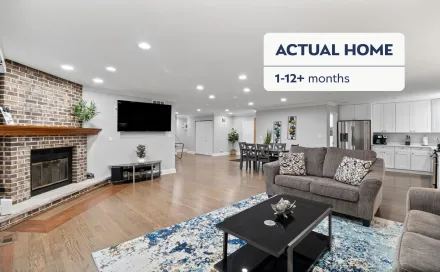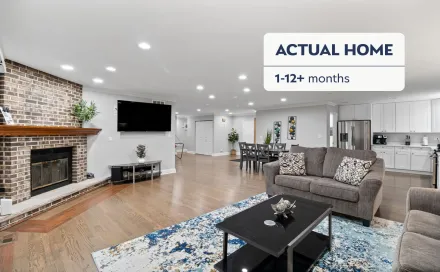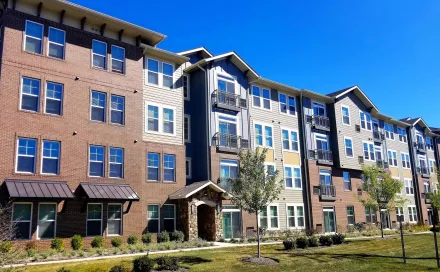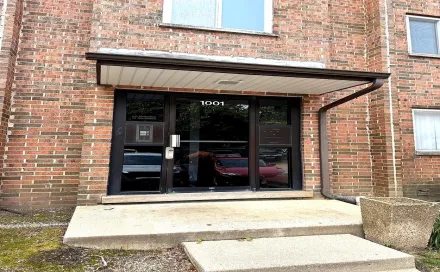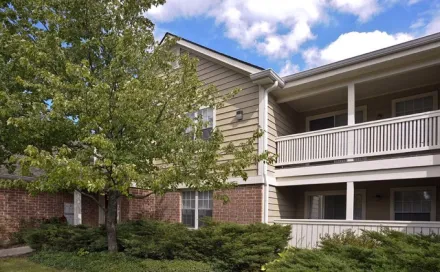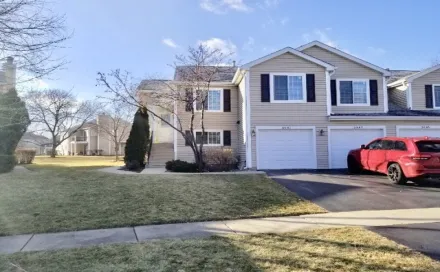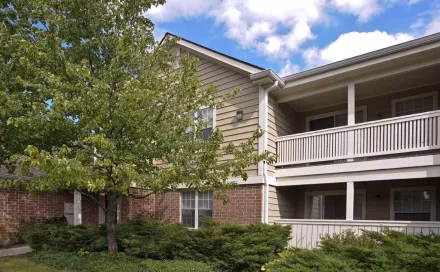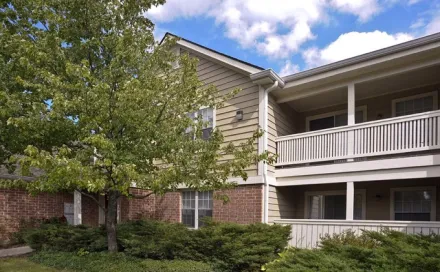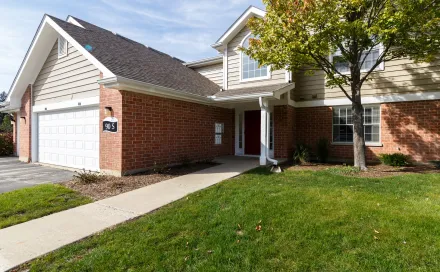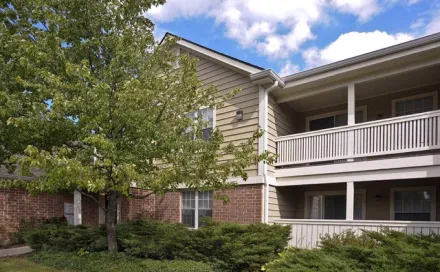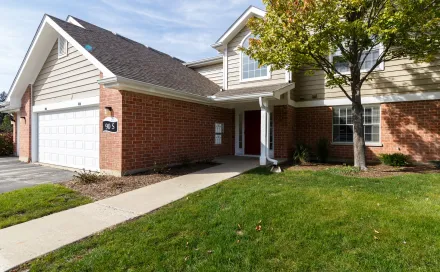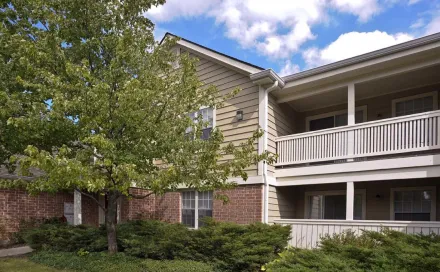Apartments for rent in Schaumburg
FAQs about Schaumburg
Schaumburg Apartment Living

Neighborhood Vibe

Heart of the Neighborhood
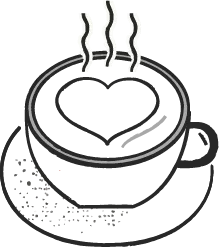
What We Love Most

Best Way to Get Around
Find Schaumburg Apartments
| Find Schaumburg Apartments | |
|---|---|
|
1 Bedroom in Schaumburg
Average Rent
|
$2.0k-
2.2k
|
|
2 Bedroom in Schaumburg
Average Rent
|
$2.4k-
2.7k
|
|
3 Bedroom in Schaumburg
Average Rent
|
$3.0k-
6.2k
|
Around the Neighborhood
Located 28 miles outside of Chicago, the village of Schaumburg, IL, has all the fixings of suburban life: good schools, pleasant neighborhoods, houses with well-manicured lawns, and plenty of strip malls. There are many choices for Schaumburg apartments for rent. Schaumburg is one of the most thriving apartment communities in all Chicago suburbs, and for a good reason. The abundance of quiet subdivisions can be found on curving tree-lined lanes off the bustling main drives. Although many single-family homes exist, Schaumburg apartments comprise a large portion of the village’s housing stock. Rentals are located throughout the area and usually take the form of rental houses, duplexes, townhouses, or multi-unit complexes.
There’s no centralized “downtown” area; Schaumburg, IL, is sprawling, with most retail located on a handful of main drags: Golf Road, Higgins Road, and Roselle Road. It’s a veritable mecca for big-box retailers, fast food joints, chain stores, and restaurants; nearly every national chain maintains a presence in Schaumburg, from TGI Fridays to Bed Bath & Beyond to Walmart. The village is also home to Woodfield Mall, the tenth-largest shopping mall in the country, adding another layer of retail experience. There are plenty of office parks and glassy high-rises throughout the area, and Motorola and IBM are among the largest employers in town. Many city slickers make their way to Schaumburg to visit Ikea, the Swedish home furnishings store with only two Illinois locations.
Demographics of Schaumburg
With approximately 80,00 residents, Schaumburg offers a diverse, well-educated community with strong economic foundations. The population demographics reveal a diverse suburb: approximately 56% White, 24% Asian, 11% Hispanic or Latino, and 5% Black or African American residents. This cultural diversity is reflected in the variety of restaurants, cultural events, and community celebrations throughout the year.
Age distribution in Schaumburg skews slightly older than the national average, with a median age of about 39 years. The village attracts a mix of young professionals, established families, and retirees, creating a balanced community atmosphere.
The economic picture is bright for Schaumburg residents, with a median household income of approximately $79,000, higher than both the Illinois and national averages. About 52% of adult residents hold a bachelor’s degree or higher, contributing to the suburb’s professional character.
Housing statistics show that approximately 65% of Schaumburg residents own their homes, while 35% rent. This healthy rental market ensures a good selection of apartments for rent in Schaumburg, with property managers accustomed to serving renter needs.
Overview of the Schaumburg Rental Market
The Schaumburg rental market offers diverse options at competitive prices compared to downtown Chicago, making it an attractive alternative for those seeking more space and amenities for their money. When exploring Schaumburg apartments for rent, you’ll find everything from affordable studios to luxury multi-bedroom units. Average monthly rent for a one-bedroom apartment in Schaumburg typically ranges from $1,300 to $1,600, while two-bedroom units generally run between $1,600 and $2,100.
Neighborhood preferences among renters typically favor areas near Woodfield Mall for convenience, while the Village Green area appeals to those seeking a more residential feel with park access. The Meacham Road corridor offers proximity to corporate offices, making it popular with professionals.
When searching for apartments in Schaumburg, timing matters. The market typically sees higher availability in spring and fall, while summer months bring more competition. Most leases run 12 months, though some properties offer 6-month or 18-month options at different price points.
For budget-conscious renters, affordable apartments Schaumburg offers are more commonly found in older buildings or in the eastern portions of the village. These units may lack the latest amenities but provide solid value in a desirable suburb.
What to Do in Schaumburg, IL
The crown jewel of Schaumburg’s commercial landscape is Woodfield Mall, one of the largest shopping centers in America with over 2 million square feet of retail space. Beyond shopping, you’ll find abundant green spaces including the 135-acre Spring Valley Nature Center and the sprawling Ned Brown Preserve, locally known as Busse Woods.
For entertainment, Schaumburg delivers with venues like the Schaumburg Boomers Stadium, home to the independent baseball team, and Medieval Times, offering dinner and tournament shows. The Prairie Center for the Arts hosts concerts, theater productions, and art exhibitions year-round. When you rent an apartment in Schaumburg, you gain access to a community that balances work and play, with corporate headquarters, diverse dining options, and recreational activities all within easy reach.
Where to Eat and Drink in Schaumburg
Restaurants
For special occasions, Wildfire Schaumburg serves premium steaks and seafood in an upscale setting. Their prime rib and martinis have earned a loyal following among locals. Shaw’s Crab House offers an impressive raw bar and fresh seafood flown in daily, making it a standout option for seafood lovers.
Schaumburg’s international offerings shine with restaurants like Yu’s Mandarin, known for hand-pulled noodles and Beijing duck. India House serves regional specialties from across the subcontinent, with an extensive lunch buffet that’s particularly popular. When you’re craving authentic Italian cuisine, Maggiano’s Little Italy delivers with family-style portions perfect for sharing.
For casual dining, Pilot Pete’s offers an aviation-themed experience with views of the small Schaumburg Regional Airport. Their burgers and sandwiches make it a local favorite for lunch and dinner.
Coffee Shops
When you need your caffeine fix, Schaumburg offers several standout options beyond the usual chains. Sweetwaters Coffee & Tea serves specialty drinks and pastries in a comfortable setting perfect for remote work or casual meetings. Their signature frozen drinks are especially popular during summer months. Daily Projects Coffee focuses on single-origin beans and pour-over methods, appealing to serious coffee enthusiasts. Their minimalist space and knowledgeable baristas create an experience that rivals downtown coffee shops.
Bars
Schaumburg’s nightlife scene provides plenty of options for unwinding after work or enjoying weekend evenings. Granite City Food & Brewery brews craft beer on-site and offers a full menu in a lively atmosphere. Their Sunday brunch is particularly popular among apartment dwellers. For a more relaxed pub experience, Finn McCool’s Irish Sports Pub offers traditional fare, a good beer selection, and live music on weekends. The outdoor patio is particularly popular during warmer months.
Getting Around Schaumburg
Public Transportation
The Pace Suburban Bus Service operates numerous routes throughout Schaumburg, connecting residential areas with shopping centers, office parks, and transportation hubs. Key routes include Route 554 (Northwest Transportation Center to Elgin), Route 606 (Northwest Transportation Center to Rosemont CTA), and the popular Route 696 (Woodfield-O’Hare-Rosemont CTA). The Schaumburg Trolley offers free transportation around the Woodfield area, connecting major shopping destinations, restaurants, and hotels. For regional rail service, the Metra Milwaukee District West Line is accessible via the Schaumburg station. While this station is not centrally located within the village, many apartment communities offer shuttle service or are within reasonable driving distance.
Commuting to Chicago
For those working in Chicago while living in Schaumburg apartments, several commuting options exist:
The Metra train from Schaumburg station to Chicago’s Union Station takes approximately 55-65 minutes, with multiple trains running during morning and evening rush hours. Monthly passes cost around $200, making this an economical option for daily commuters. Express Pace buses provide another option for Chicago commuters. Route 600, known as the Northwest Express, connects Schaumburg’s Northwest Transportation Center to downtown Chicago with limited stops, resulting in a faster commute than local routes.
For those who prefer to drive, Interstate 90 (Jane Addams Memorial Tollway) provides direct access to Chicago, with a typical commute time of 35-60 minutes depending on traffic conditions. Many Schaumburg residents use the Rosemont Blue Line station as a park-and-ride option, driving to Rosemont and taking the CTA into the city to avoid downtown parking costs.
Parking and Traffic
Unlike Chicago neighborhoods, most apartments in Schaumburg offer ample parking options. Typical apartment communities provide at least one assigned parking space per unit, with many offering garage options for an additional fee. Street parking is generally unrestricted in residential areas, though always check local regulations.
Traffic flow in Schaumburg varies by location and time. The areas around Woodfield Mall experience the heaviest congestion, particularly during weekend shopping hours and weekday rush periods. The village has invested in smart traffic signals along major corridors to improve flow during peak times.
For cyclists, Schaumburg offers over 90 miles of bike paths and bike-friendly roads, earning it a “Bicycle Friendly Community” designation from the League of American Bicyclists. Many apartment communities connect directly to this extensive bike network, making cycling a viable option for local transportation.
Schools and Higher Education in Schaumburg
Public, Private, and Charter Schools
Schaumburg is primarily served by School District 54 (Schaumburg Township Elementary) and Township High School District 211, both known for their academic excellence and comprehensive programs. Standout public elementary schools include Dooley Elementary School, recognized for its strong STEM focus, and Aldrin Elementary School, which offers innovative literacy programs. For middle school education, Robert Frost Junior High provides strong academic preparation for high school with extensive extracurricular offerings. High school students typically attend Schaumburg High School or James B. Conant High School, both part of District 211. These schools offer comprehensive AP and honors programs, strong athletic departments, and award-winning fine arts programs.
For families seeking private education, St. Peter Lutheran School provides faith-based education for preschool through 8th grade with small class sizes and personalized attention. Schaumburg Christian School offers education from preschool through high school with a focus on character development alongside academics. The area also features specialized educational options like Einstein Academy, a private school for gifted children that emphasizes accelerated learning and creative thinking.
Colleges and Universities
Higher education opportunities abound in and around Schaumburg, making it an excellent location for students seeking apartments near campus or professionals pursuing continuing education. Roosevelt University Schaumburg Campus offers undergraduate and graduate programs with a focus on business, education, and pharmacy studies. The modern campus includes state-of-the-art facilities and serves many working professionals through evening and weekend classes. Harper College located in neighboring Palatine but serving Schaumburg residents, provides associate degrees and certificate programs across numerous fields. Their continuing education programs and workforce development initiatives serve thousands of area residents annually.
Additionally, several major universities maintain satellite locations or offer classes in Schaumburg, including Northern Illinois University and DePaul University, providing convenient access to advanced degrees for working professionals.
History in Schaumburg
Schaumburg was once a farming community settled by German immigrants and easterners from New England. However, the easterners continued to move west, and by 1870, Schaumburg’s population was 100% German. When the Great Depression struck, many German-owned farms foreclosed and were purchased by non-Germans. Nonetheless, German remained the first language of most households until the 1950s. The 60s and 70s were periods of tremendous local change. The population exploded, Interstate 290 was constructed, and Woodfield Mall opened. The village transformed from a rural farm town to the bustling suburb it is today.
